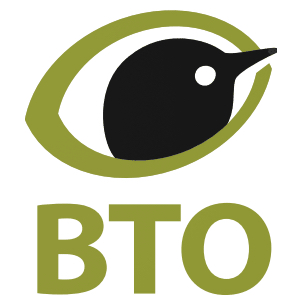With their smart blue caps, yellow breasts and white cheeks, blue tits are one of our most colourful garden visitors. They are also wonderfully acrobatic – clinging, swinging and pecking for food at remarkable angles on bird feeders. When combined with their busy ‘ti-ti-ti-chuuuuuuur’ calls as they move around a neighbourhood, we have one of our liveliest and most exciting garden birds. Learn more about blue tits in our expert guide by the British Trust for Ornithology (BTO).
More garden bird guides by the BTO:
What is the scientific name of the blue tit?
The scientific name of the blue tit is Cyanistes caeruleus.
Tits are part of the Paridae family, which also includes chickadees and titmice. Learn more about the different tit species in the UK in this guide by BBC Countryfile Magazine.
How to identify blue tits
Blue tits have small blue caps with a white head and a black eye-stripe. They also have yellow underparts and a bluish back, becoming brighter blue at the wings. Male and female look similar but juveniles are duller in appearance, with no blue cap or white cheeks.
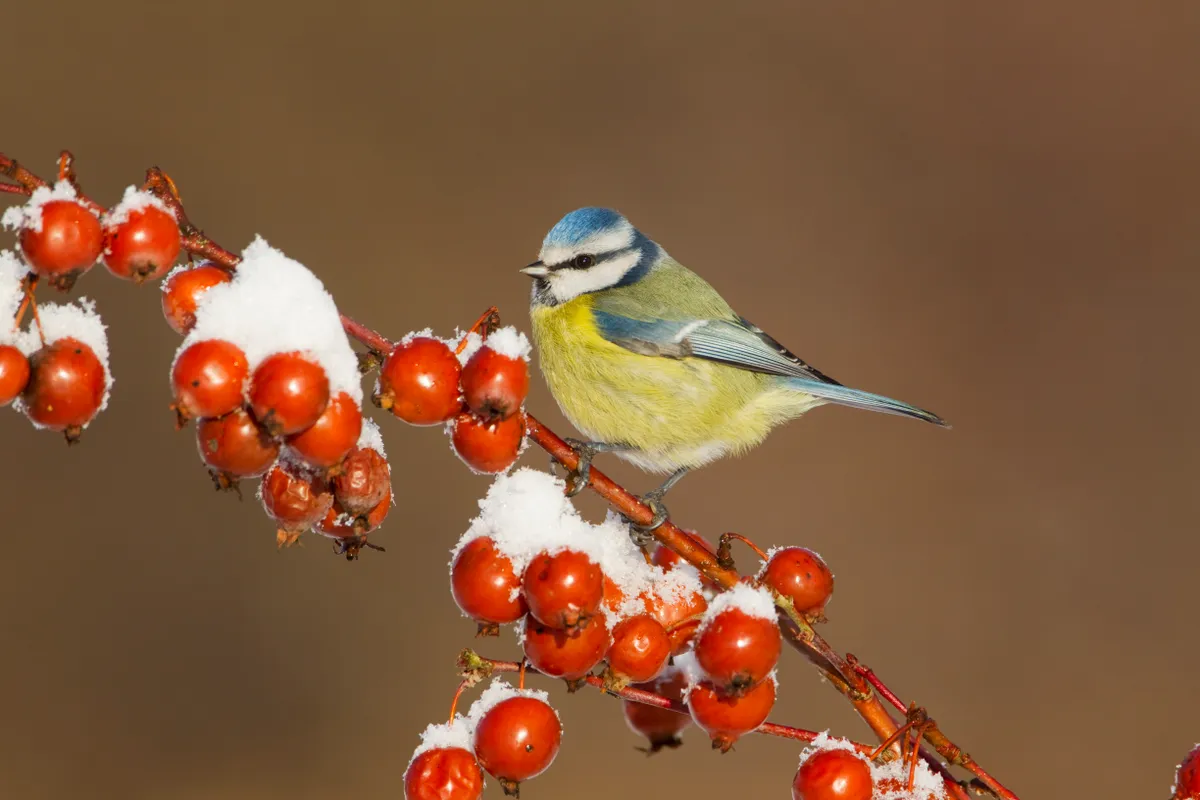
Blue tits can be confused with great tits (pictured below), as their bodies and wings are quite similar in colour. However great tits are larger, and the two species can also be told apart by the colouration of their heads. Blue tits have a blue crown, and a dark line running through the white cheek. Great tits have a larger crown, which is black, and the white cheek is not dissected.
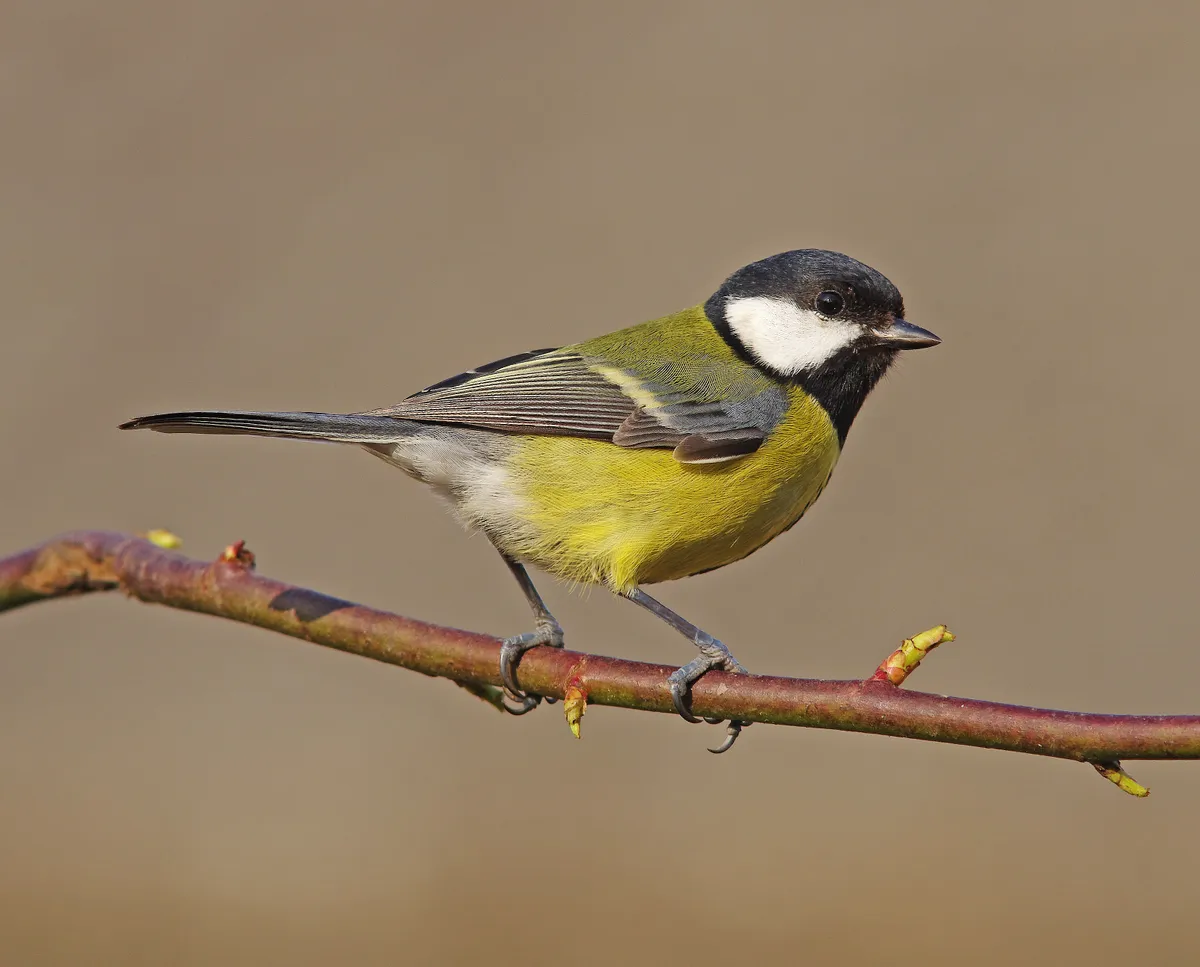
Please note that external videos may contain ads:
Identifying blue tits and great tis. © BTO
What do blue tits sound like?
The song of blue tits is an urgent sounding trill and they have various scolding calls.
Please note that external videos may contain ads:
#BirdSongBasics - blue tits and great tits. © BTO
What do blue tits eat?
Insects and spiders. They will also take fruit and seeds in winter, and they regularly visit garden bird feeders.

What predators do blue tits have in gardens?
Blue tits are mainly predated by sparrowhawks.
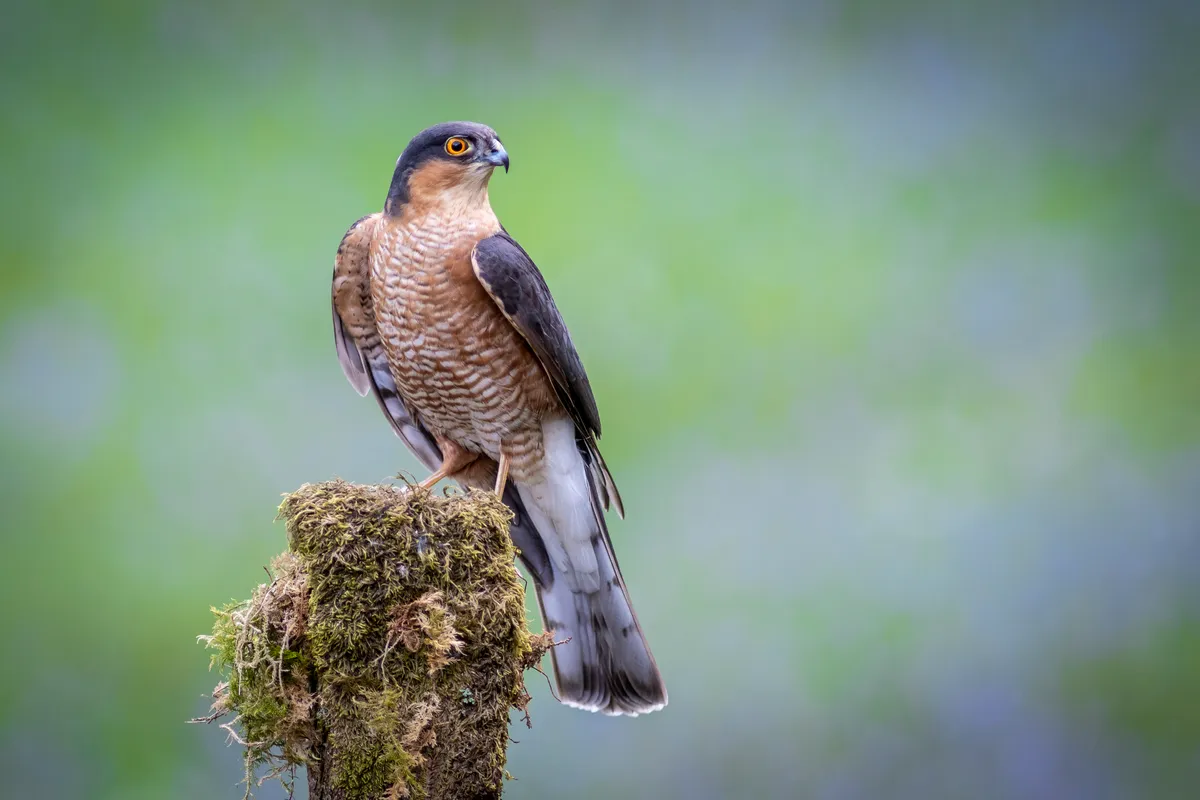
How numerous are blue tits?
According to data from 2016, there were 3.3 million pairs of blue tits in Britain and 3.4 million pairs of blue tits in the UK.

How long do blue tits live for?
Blue tits tend to live for around three years. However, the current longevity record for this species is 10 years and three months!
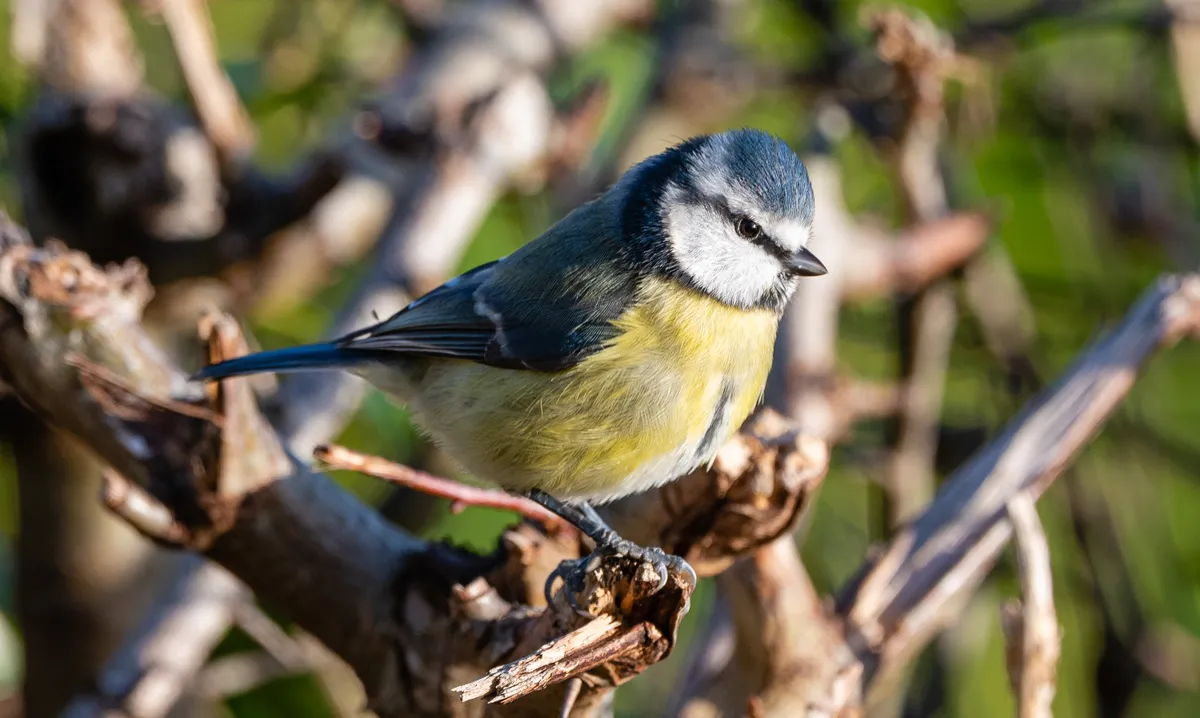
When are blue tits most frequently seen in gardens?
According to the BTO's Garden BirdWatch data, which has been collected since 1995, blue tits are most frequently seen in gardens during January, in around 93% of gardens.
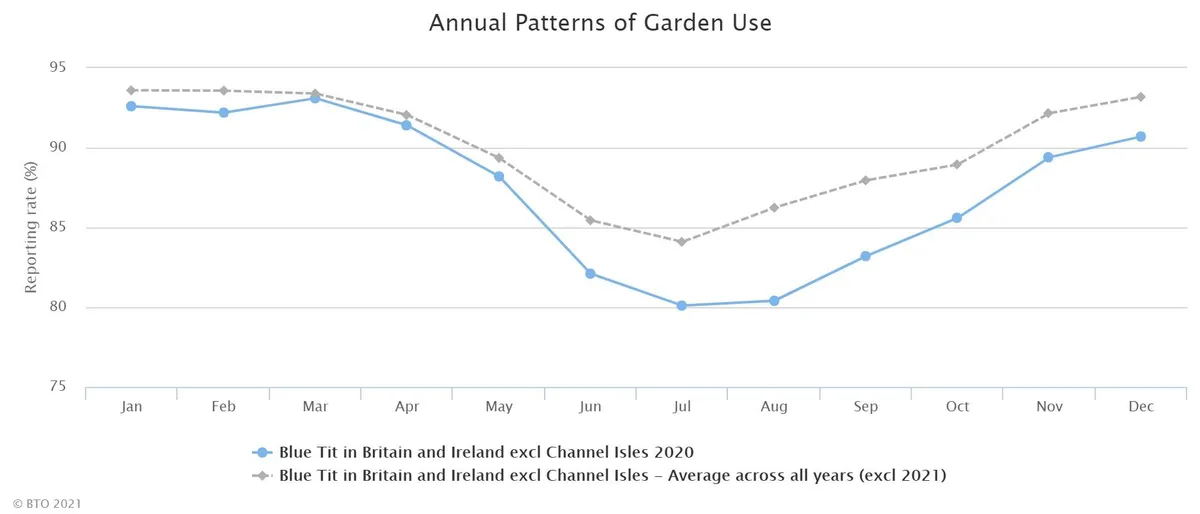
Are blue tits increasing or declining in gardens?
Blue tit numbers have declined slightly in gardens since Garden BirdWatch began. However, it is clear that supplementary feeding in gardens and the provision of nestboxes has benefited the British breeding population.
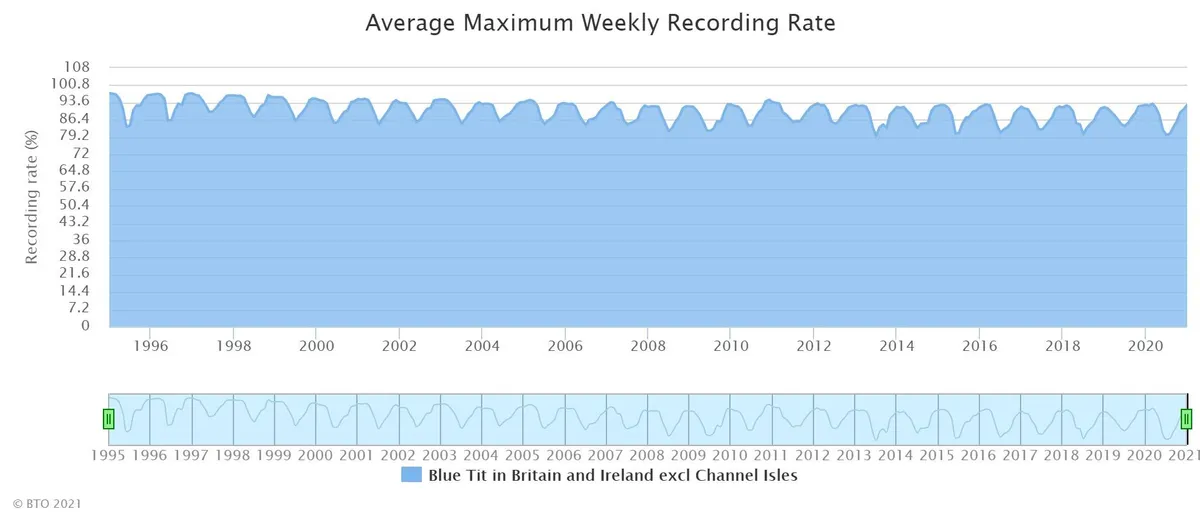
When do blue tits nest?
Blue tits nest from April to June and tend to have one brood per year. They lay up to 10 eggs which are incubated for up to 16 days. The young tend to fledge after around 22 days.
During March, blue tit pairs can be seen prospecting nestboxes in gardens, looking for a place in which to rear their young. Over the next few weeks nest building will begin in earnest, and they nest from April to June. A first layer of moss will be followed by lining of feathers and other soft materials.
A female blue tit will build her nest alone, with her mate following her around to make sure that no other males mate with her. Despite this, it is estimated that over 40% of blue tit nests contain at least one chick that is reared by a male that is not its genetic parent.
In April – rarely before – the female will start laying. She will lay one egg per day, each at around 6am, until her clutch is complete.
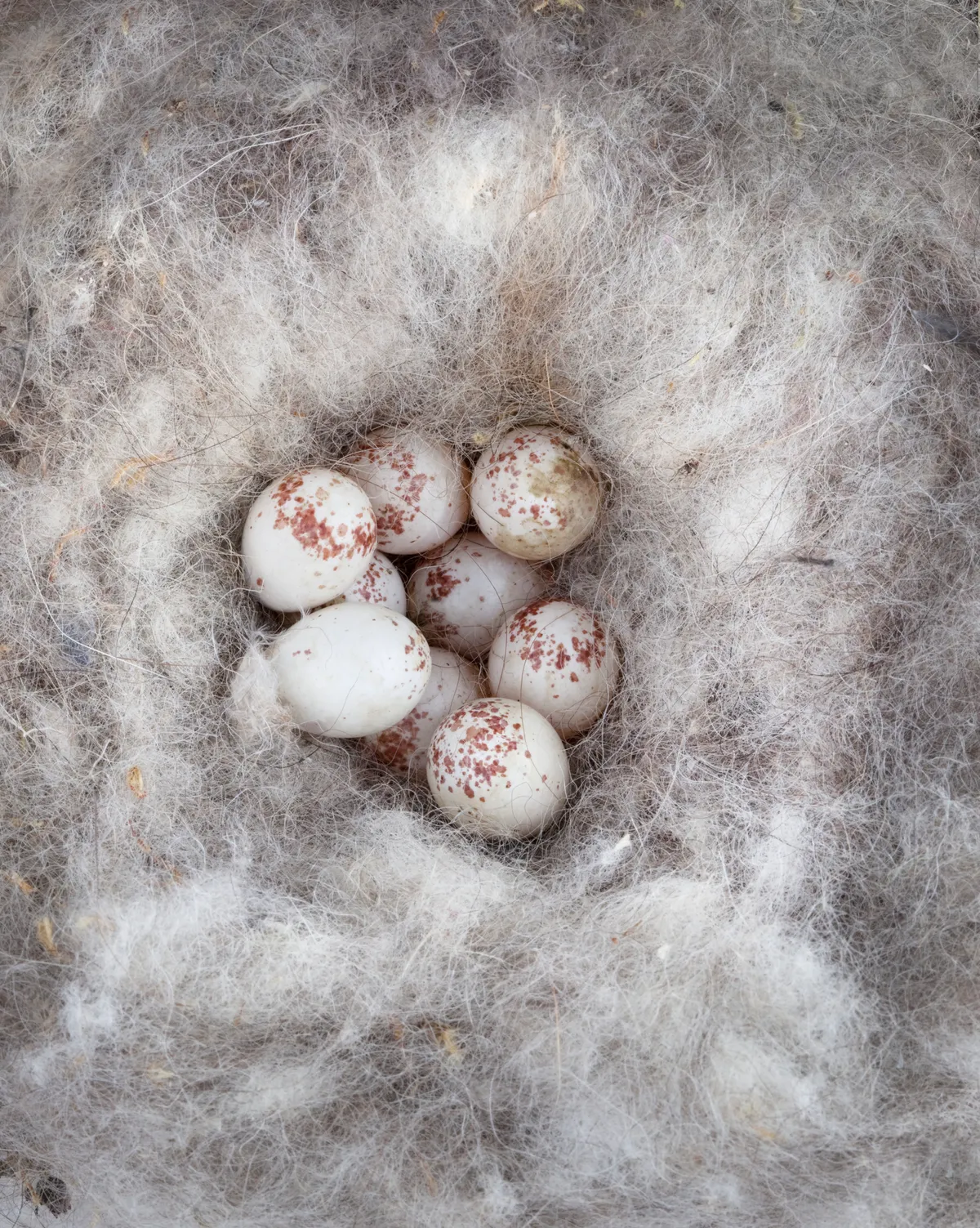
An average clutch consists of 8–10 eggs, which can exceed a female’s own body weight! Incubation usually commences when the penultimate egg of a clutch is laid, and lasts for approximately 13–15 days.
During this time the male will feed the female while she remains in situ, a process known as courtship feeding, although she will leave the nest occasionally.
Once the chicks hatch, the really exciting action takes place. With lots of hungry beaks to feed, both parents work tirelessly to rear their young, often flying hither and thither, from dawn until dusk. In total, up to 10,000 caterpillars may be needed in order to rear a brood of blue tits.
All being well, the youngsters will fledge the nest around three weeks after hatching.
Learn more about identifying garden bird nests, birds' eggs, and feathers.
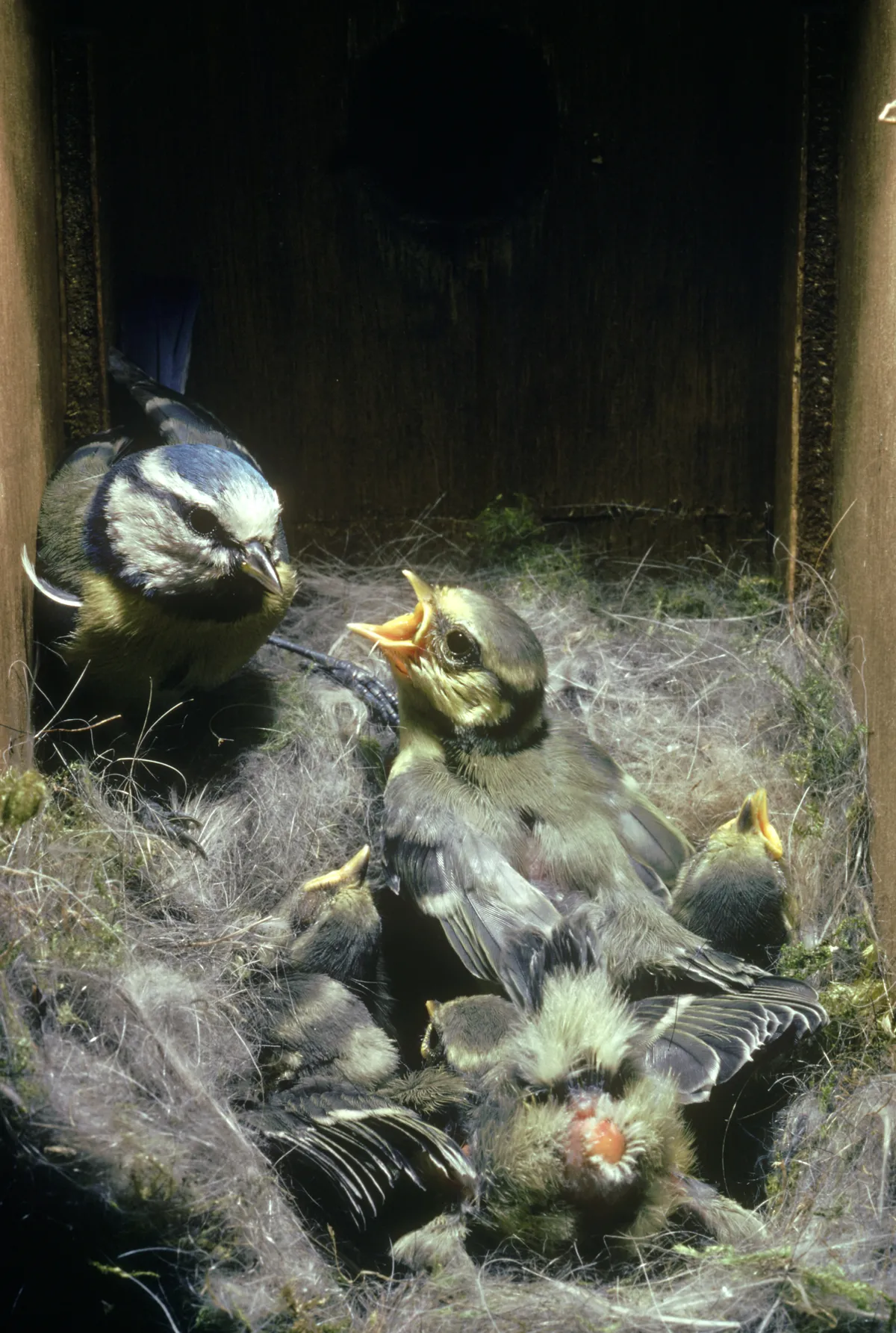
Do blue tits use nest boxes?
Blue tits regularly use nest boxes with a 25 millimetre entrance hole. The best orientation for a blue tit nest box is facing north-east.
A plan for building a blue tit nest box can be found on the BTO website.
Find out how to clean a nest box.

What can I do to help blue tits in my garden?
Put bird feeders out and supply fresh, clean water for them.
Make sure to clean and disinfect feeders and feeding sites regularly to reduce the transmission of diseases between birds. For example, the bacterium Suttonella ornithocola has been commonly observed blue tits. Find out more about S. orthnithcola infecting garden birds on the Garden Wildlife Health website.
Find out more about attracting birds to your garden, and gardening for a range of wildlife.
The British Trust for Ornithology (BTO) is a UK charity that focuses on understanding birds and, in particular, how and why bird populations are changing. Our vision is of a world where people are inspired by birds and informed by science.
Main image: A blue tit perched on a twig. © Philip Croft/BTO
